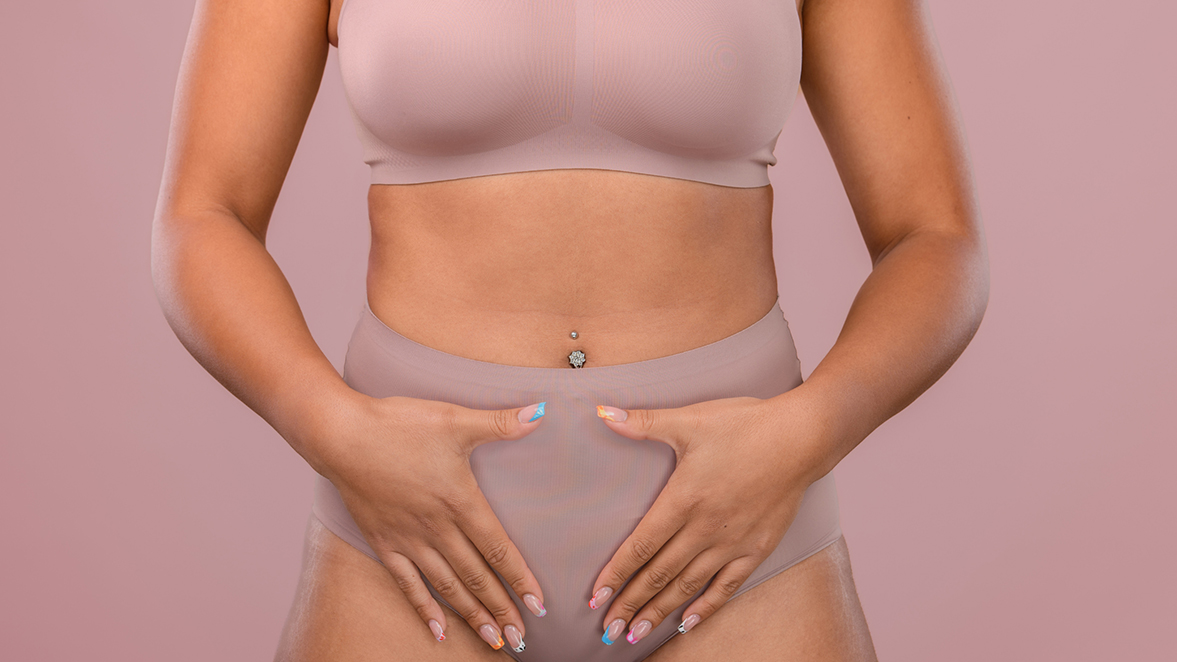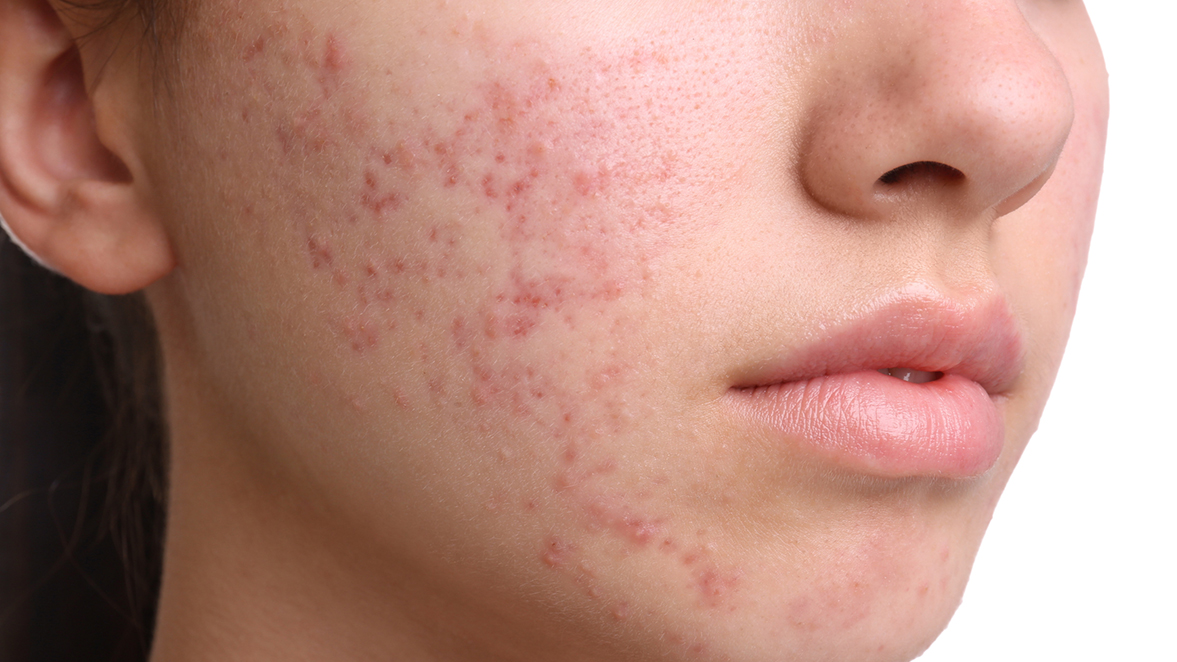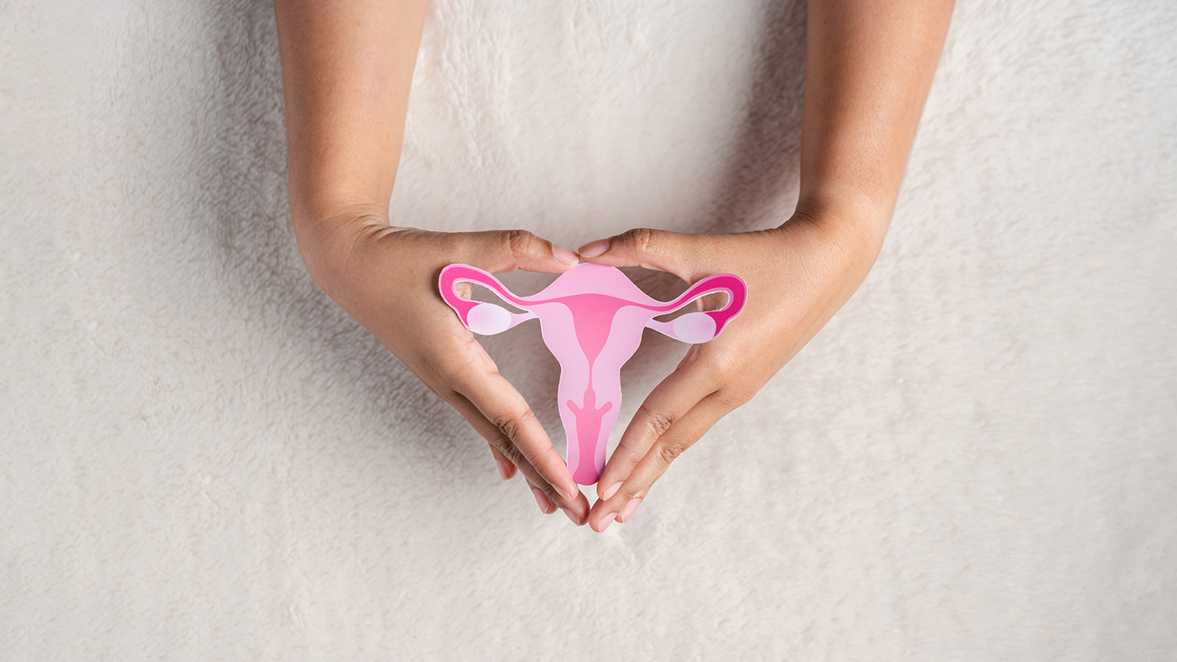
Endometriosis vs. PCOS: Symptoms, Causes & Treatment
Endometriosis and polycystic ovarian syndrome (PCOS) are two common health issues many women suffer from. Endometriosis and PCOS have some shared and overlapping symptoms, including irregular, heavy, or painful periods.
However, there are some clear distinctions between the two conditions. Understanding the differences between endometriosis and PCOS can help you and your doctor recognize which one you are dealing with or if you are dealing with both.
Endometriosis occurs when tissue similar to the lining of the uterus grows outside the uterus. This tissue may also be found on the ovaries, bladder, bowel, ligaments, and the lining of the abdominal cavity. It may lead to pain and scarring. PCOS is a hormonal disorder characterized by small cysts on the ovaries, irregular periods, difficulty ovulating, excess hair growth, acne, weight gain, and fertility issues.
Figuring out if your symptoms are related to endometriosis or PCOS is key to recovery. Understanding the cause of your issues can help your doctor figure out the right treatment plan and help you manage your condition better. If you are dealing with menstruation-related issues, this article is for you. Let’s dive into the world of endometriosis vs PCOS.
What Are Endometriosis and PCOS
Let’s start with the definition of the two health issues as we compare PCOS and endometriosis.
What Is Endometriosis?
Endometriosis is a condition characterized by a tissue similar to the lining of the uterus growing outside the uterus. This can result in inflammation, chronic pelvic pain, severe menstrual cramps, and fertility issues. Though endometriosis is the most common in women of childbearing age, it may develop and present in women post-menopause and adolescents before puberty. The condition may persist after menopause (1).
What Is PCOS?
Polycystic ovary syndrome (PCOS) is a hormonal disorder that can affect women of reproductive age. Women with PCOS often experience small ovarian cysts. PCOS is characterized by irregular periods, difficulty ovulating, excessive hair growth, acne, weight gain, and fertility issues. Though PCOS mainly affects women during their reproductive years, hormonal imbalances, insulin resistance, and increased risk of diabetes, cardiovascular disease, and other conditions that we often see together with PCOS, can persist beyond the reproductive years, including after menopause (2).
Symptoms of Endometriosis

To see the difference between endometriosis and PCOS, we should first compare their symptoms. Let’s start with endometriosis (3).
Pelvic Pain During Menstruation
One of the major symptoms of endometriosis is pelvic pain during menstruation. It can be present at any time during your cycle if you have endometriosis. It can be rather severe for many and it will typically worsen during menstruation. This happens because of the growth of endometrial tissue outside your uterus which can change as your hormones shift. During your period, there may be more inflammation, swelling, and, of course, bleeding, which can lead to more intense cramping and pain.
Pain During Intercourse Or Bowel Movements
Another major symptom of endometriosis is pain during intercourse or bowel movements. Endometrial tissue can form on and around various organs, including your intestines, ovaries, and bladder. It’s no surprise that you may experience pain when going to the bathroom or having sex. Again, the pain may be severe, sharp, and chronic, and may worsen during menstruation.
Other Symptoms of Endometriosis
These were only the major symptoms of endometriosis. You may experience other symptoms. Here are all the potential symptoms you may notice with endometriosis:
- Painful periods including cramping, pelvic pain, lower back pain, and stomach pain
- Dysmenorrhea
- Severe pain with intercourse
- Pain with bowel movements or urination
- Excessive bleeding
- Infertility
- Diarrhea or constipation
- Bloating
- Nausea
- Fatigue
Symptoms of PCOS

Let’s look at the symptoms of PCOS (4).
Irregular Periods And Difficulty Ovulating
One major symptom of PCOS is irregular periods and ovulation issues. In PCOS, there is a hormonal imbalance that interferes with ovulation. This may lead to irregular or absent menstrual periods. One month, you may get a period early, and then the other months it may be late. You can experience missed periods, long cycles, and prolonged bleeding. Hormonal imbalances and issues with ovulations may lead to difficulty conceiving and infertility.
Excessive Hair Growth And Acne
Another common symptom of PCOS is excessive hair growth and acne. This happens when the ovaries produce more male hormones called androgens. This can result in higher oil production, which may clog your pores and cause breakouts. It can also cause hair growth or hirsutism in your face, back, and chest. It may also lead to male pattern baldness.
Other Symptoms of PCOS
These were only the major symptoms of PCOS. You may experience other symptoms. Here are all the potential symptoms you may notice with PCOS:
- Irregular periods
- Excess facial or body hair
- Severe acne
- Male pattern baldness
- Polycystic ovaries
- Weight gain
- Infertility
Causes of Endometriosis
Besides their symptoms, one important way to distinguish between PCOS and endometriosis is by looking at their causes. Let’s start with the potential causes of endometriosis.
Misplaced Endometrial Tissue Outside the Uterus
You develop endometriosis when endometrial-like tissues grow outside the uterus. It tends to grow and attach to organs in the pelvic area, including the ovaries, fallopian tubes, bladder, and even the gastrointestinal tract (5).
The problem is that outside the uterus, this tissue will continue to behave just like regular endometrial tissue. This means that it will go through thickening and breakdown during each menstrual cycle, which can lead to inflammation, scar tissue, adhesion, pain, fertility problems, and other issues.
Unfortunately, we don’t understand the exact causes of these misplaced endometrial tissues. Some theories include retrograde menstruation, which is when menstrual blood and uterine tissue flows backward through the fallopian tubes into the pelvic cavity, hormonal imbalances, and immune system issues.
Genetic and Environmental Factors
It also seems that genetics and environmental factors may also increase your risk of developing endometriosis. Family history or having a close family member with endometriosis can indicate genetic predisposition and increase your likelihood of developing endometriosis. Certain genes may also increase your risk factors (6, 7).
Moreover, environmental factors may also play a role. Environmental toxins, especially endocrine-disrupting chemicals and xenoestrogens may disrupt your hormonal imbalance, contribute to an increased immune response, and increase inflammatory processes. This may all increase your risk or worsen your symptoms of endometriosis (8, 9).
Causes of Polycystic Ovary Syndrome (PCOS)
Now that you understand the symptoms of endometriosis, let’s get into the causes of PCOS.
Hormonal Imbalance And Insulin Resistance
One of the main causes of PCOS is hormonal imbalance. PCOS is associated with higher levels of the male hormones called androgens, which can disrupt normal ovarian function. It may prevent your ovaries from releasing an egg, which can result in irregular periods and cysts on your ovaries (10, 11).
Insulin resistance is another main underlying cause we see in PCOS (12, 13). If you have insulin resistance, your body’s cells don’t respond effectively to insulin, leading to elevated blood sugar levels and causing your body to make more insulin to compensate. Increased insulin levels can lead to the release and increased levels of androgens, causing abnormal cell growth. Moreover, we also see chronic inflammation in people with PCOS which could be the result of health issues, diet, lifestyle choices, and environmental toxin overload.
Genetic Predisposition
Just like with endometriosis, genetics and a family history may play a role in PCOS too. Having family members with PCOS, hormonal imbalances, or insulin resistance may increase the likelihood of PCOS. Certain genes and genetic variations may also increase your risk of hormonal issues and insulin resistance (14, 15). When you combine genetic factors with poor dietary and lifestyle choices, you may be adding fuel to the fire, increasing your risk of developing PCOS even more.
Treatment Options for Endometriosis
Another way to compare endometriosis and PCOS is by looking at their treatment options. Let’s start with the potential treatment options for endometriosis.
Pain Management Through Medication Or Surgery
Your treatment for endometriosis depends on the severity of your endometriosis. In most cases, treating endometriosis focuses on pain management. The first step is often over-the-counter medications such as nonsteroidal anti-inflammatory drugs (NSAIDs) to reduce pain (16, 17, 18). The next step is prescription medications for inflammation and pain.
In more severe cases of endometriosis, surgery may become necessary. Through laparoscopic surgery, your doctor can remove endometrial tissue outside the uterus (19, 20). This may decrease pain and improve your quality of life. However, endometrial tissue can regrow, which may make further surgeries and other treatments necessary.
Hormonal Therapies To Reduce Endometrial Growth
Hormonal therapies are additional options to improve your life with endometriosis. These options can act on the hormonal cycle to decrease the growth of the endometrial-like tissue. Hormonal options may include birth control pills, patches, and intrauterine devices (IUD) to decrease or completely stop your periods, which may reduce your symptoms (21).
Gonadotropin-releasing hormone (GnRH) agonists and antagonists may lead to temporary menopause which can also reduce endometrial growth (22). These therapies are not a cure, however, may offer long-term relief along with pain management options.
Treatment Options for PCOS
Let’s look at the treatment options for polycystic ovary syndrome.
Lifestyle Changes Like Diet And Exercise
The first step for improving your experience with PCOS is dietary and lifestyle changes. Removing inflammatory foods, such as refined sugar, refined oil, additives, and overly processed foods, and following a nutrient-dense diet rich in greens, vegetables, herbs, spices, fermented foods, sprouts, fruits, nuts, seeds, whole grains, grass-fed meat, pasture-raised eggs and poultry, wild-caught fish and seafood, and wild game is critical. If you have insulin resistance, regulating your blood sugar through diet is key (23, 24).
Additionally, moving your body and exercising regularly can improve your insulin sensitivity and support weight loss or weight management, which in turn may reduce your symptoms (25). Improving your sleep, reducing stress, and decreasing environmental toxin exposure can further reduce inflammation, hormonal imbalances, and related symptoms.
Medications To Regulate Menstrual Cycles Or Fertility Treatments
When dietary and lifestyle modifications are not enough, medications may come into play to regulate your menstrual cycle. If you are trying to conceive, fertility treatments may come into play. Birth control pills, IUDs, and other hormonal contraceptives may reduce your androgen levels, regulate your periods, and improve your symptoms (26).
Clomiphene citrate or letrozole may help stimulate ovulation (27, 28). If you are looking to conceive, injectable hormones or in vitro fertilization (IVF) may also be necessary (29). Moreover, if you are dealing with insulin resistance or diabetes, medications to improve it may be recommended as well.
Living With PCOS and Endometriosis

Endometriosis and PCOS are both common hormonal issues in women. Both can interfere with your wellness and daily life and can turn severe and debilitating. Symptoms of endometriosis and PCOS can overlap and some women have both conditions.
If you are unsure whether you have endometriosis vs PCOS, we recommend consulting with a healthcare provider. Working with a functional and integrative medicine doctor can help you figure out the root cause of your condition and offer personalized treatment. If you need to further your hormonal health and reduce your symptoms of endometriosis or PCOS, set up an appointment with us here.
